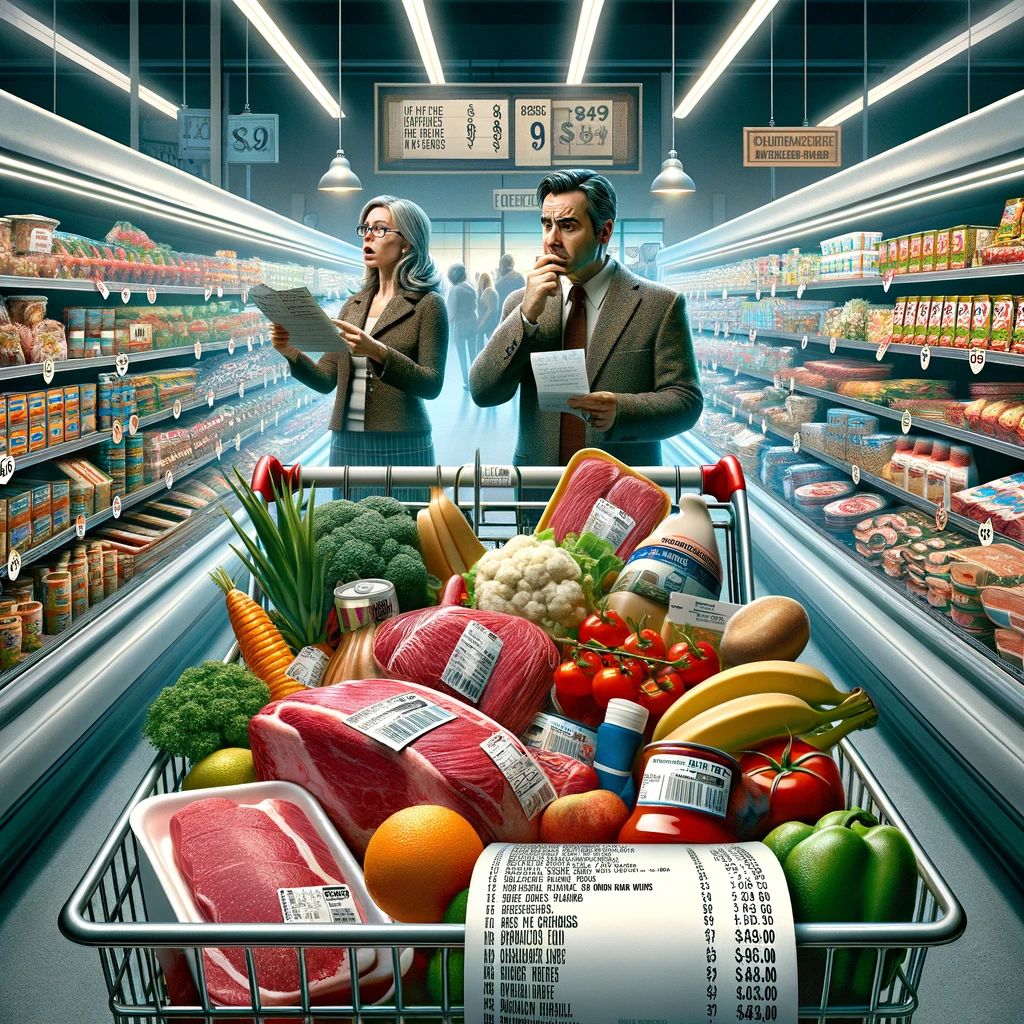
In recent years, economic shifts have had a profound impact on the cost of living, notably affecting the affordability of everyday essentials. Among these, grocery items the middle class can no longer afford have become a pressing issue. This article delves into 13 such items, highlighting the surprising trends and providing insights into the factors driving these changes.

1. Beef and Veal
The price of beef and veal has skyrocketed, making it one of the top grocery items the middle class can no longer afford. Due to factors like increased feed costs and high demand, these meats have become luxuries for many families. As a staple protein source, the absence of beef and veal in diets represents a significant lifestyle shift, pushing consumers towards alternative, more affordable protein sources.

2. Seafood
Seafood, once a regular item on many dinner tables, has seen its prices rise steeply. Overfishing, pollution, and climate change have all contributed to the dwindling supply and increased cost. This has made seafood a less viable option for the middle class, who are now reconsidering their dietary choices.

3. Fresh Fruits and Vegetables
Fresh fruits and vegetables have become more expensive due to factors like transportation costs and climate-related production challenges. This shift impacts not only the affordability of a healthy diet but also increases reliance on processed foods, which can have long-term health implications.

4. Organic Products
The premium for organic grocery items has widened, pushing these products out of reach for many in the middle class. Despite the known benefits of organic eating, the cost barrier has become a significant deterrent, forcing consumers to opt for conventional alternatives.

5. Specialty Cheeses
Specialty cheeses, with their diverse flavors and origins, have seen a price surge. This places them among the grocery items the middle class can no longer afford. This trend reflects broader issues in dairy production and import regulations, limiting access to these once-common indulgences.

6. Olive Oil
Olive oil, a staple in healthy diets, has become pricier. This is due to poor harvests in key producing countries and rising global demand. This has made it more difficult for middle-class families to incorporate this essential fat into their diets, prompting a search for less costly alternatives.

7. Nuts and Seeds
Nuts and seeds, known for their nutritional benefits, have become less accessible due to their high prices. Factors such as crop failures and increased demand for plant-based diets have driven up costs, making these healthy snacks and ingredients less attainable.

8. Gluten-Free Products
The demand for gluten-free products has surged, but so have the prices, making them grocery items the middle class can no longer afford. This trend is problematic for those with celiac disease or gluten sensitivity, who rely on these products for their health.

9. Coffee
Coffee, a daily essential for many, has seen its prices rise dramatically. Factors such as climate change affecting coffee-growing regions and increased global demand have made it more difficult for middle-class consumers to afford their favorite brews.

10. Chocolate
The price of chocolate has increased due to factors like the rising cost of cocoa and sugar and ethical sourcing practices. This has made high-quality chocolate a luxury item for many middle-class families.

11. Alcoholic Beverages
Alcoholic beverages, outstanding wines, and craft beers have seen price hikes that place them among the grocery items the middle class can no longer afford. This reflects changes in production costs, taxation, and a growing interest in specialty products.

12. Spices and Herbs
Spices and herbs have become more expensive, partly due to the global nature of their supply chains. This increase affects the ability of middle-class families to add variety and flavor to their meals without stretching their budgets.

13. Baby Food
Baby food, essential for families with infants, has seen its prices rise, making it a challenging expense for middle-class families. This increase can be attributed to the demand for organic and specialty products in this category.

What It Means For The Future
The trend of rising prices for these 13 grocery items the middle class can no longer afford is a reflection of broader economic pressures and changing consumer demands. It underscores the need for awareness and adaptation, both in personal budgeting and in broader policy discussions aimed at ensuring access to affordable, nutritious food for all. As we navigate these challenging times, it’s crucial to stay informed and explore alternatives that can help manage our grocery budgets more effectively.


